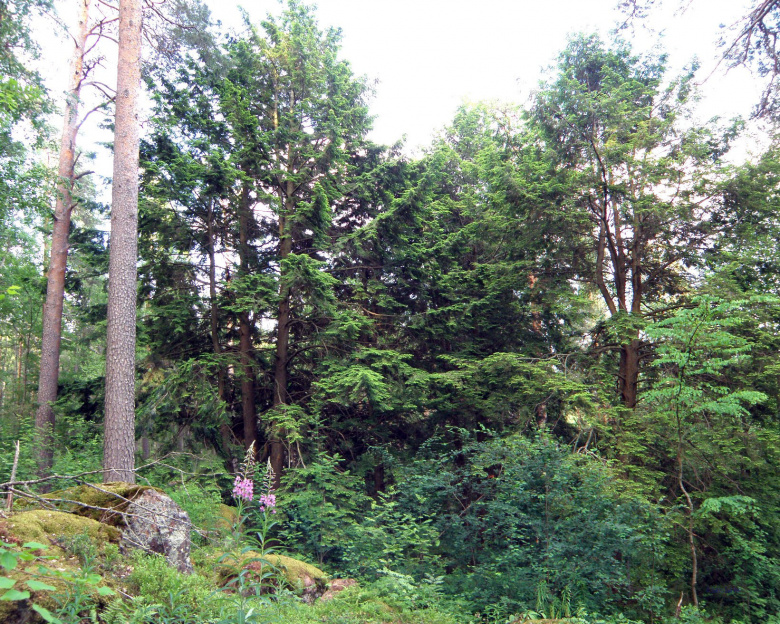Eastern hemlock grows over a large range in eastern North America. Like the other hemlocks, it is a so-called forest climax species, growing quite happily when young under a shading canopy. Clues to its adaptation to shade are the needles, which densely cover the branches. The species grows rather slowly but eventually becomes a large broad tree. On open sites it produces multiple branches and remains shrubby in habit.
Eastern hemlock was brought to England as early as the 1600s. It was named hemlock because the crushed needles have the same kind of smell as poison hemlock (Conium maculatum). Eastern hemlock is a popular landscaping species in central Europe, with many forms and varieties available. It is also the most popular of the hemlocks in Finland, though not the hardiest. The plants sold here are usually imported from Holland and don’t necessarily represent the most suitable provenances.
At Mustila there is a dense group of eastern hemlock over a century old growing on Etelärinne (Southern Slope). Their origin is unknown but they have survived even the coldest winters with very little damage. On Pohjoisrinne (Northern Slope), new plantings of the species have been made in the 2000s using seedlings from Mustila’s own collecting expeditions at the northern limit of its range. Some of them have suffered frost damage to their crowns when exposed above snow cover but as they gather strength, most of them have started to grow exceedingly well, and rapidly.

